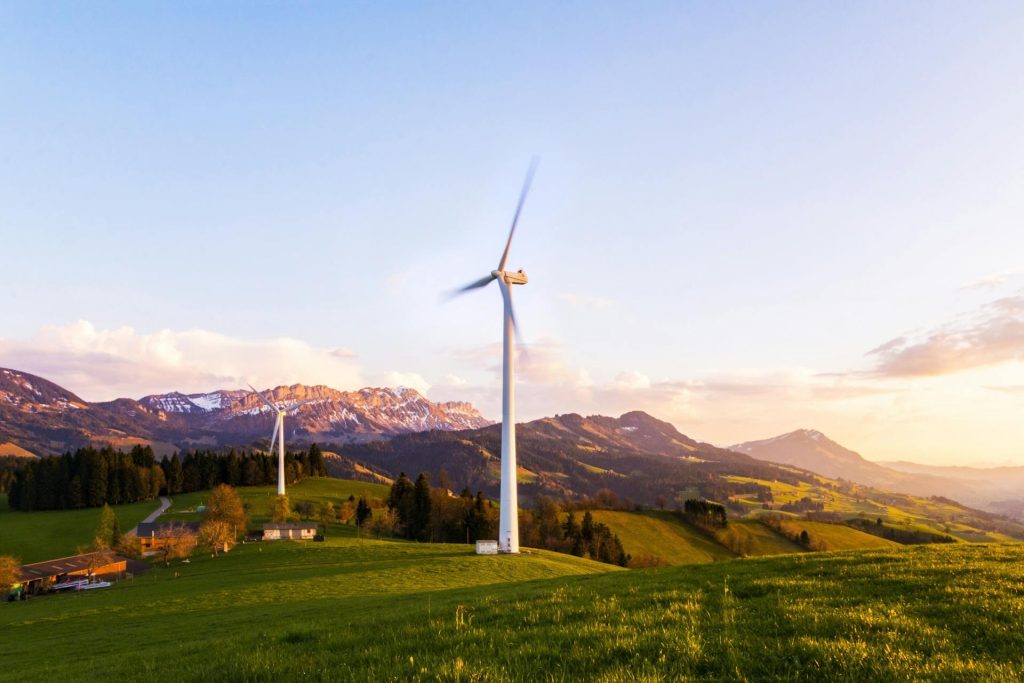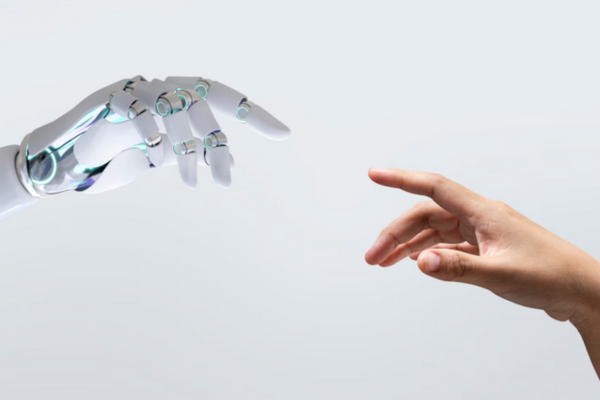"This is the coolest summer of the rest of our lives." I'm sure you've heard this alarming expression, especially in a country where the sun shines particularly strongly in the summer and is particularly sensitive to climate change.
We say it's alarming and we're not exaggerating. The climate change is, unfortunately, an increasingly present realityyear after year, creating difficult challenges for all of humanity to overcome.
Heatwaves and storms, however, are just the tip of an iceberg that is radically altering the landscape of the planet we call home and which is being promoted by human action.
Faced with this serious problem, we demand global responses that dismantle a scenario in which the depredation of ecosystems and inequality between rich and poor are the maximum exponents of an economic idea which is characterised by the illusion of infinite growth and the degradation of living conditions, especially for the most vulnerable populations.
It is with the awareness that this culture deserves a proper solution that the UN (United Nations Organisation) has decided to act and structure the struggle for a more just and environmentally sensitive society through the creation of the Agenda 2030which, among other things, consists of a list of 17 Sustainable Development Goals (SDGs) for the world.
What are the SDGs and where did they come from?
In 2015, the UN's goal of uniting the international community around the fight for a more sustainable world took a significant step forward with the adoption by all member states of the organisation (including Portugal) of the 2030 Agenda for Sustainable Development.
This document, which seeks to define the priorities and aspirations for sustainable global development to be achieved by 2030, lists a set of 17 common goals and targets to be put into practice by the countries that signed the agreement, the SDGs.
But, after all, what are the Sustainable Development Goals?
As the name suggests, the The SDGs are a practical guide on how both developed and developing countries should recognise and work to eradicate poverty, fight inequality, protect their ecosystems, improve their education and health systems, tackle climate change and stimulate economic growth..

The great ambition of these 17 UN social and environmental goals is, as can be read in the document approved by the 193 member countries of the organisation, "leave no-one behind".
To this end, a common language and sustainability goals were established for all stakeholders and the respective metrics were set around 5 critical areas for humanity: Planet, People, Prosperity, Peace and Partnerships.
What are the 17 Sustainable Development Goals?
So what are the 17 Sustainable Development Goals?
We've already mentioned the 17 SDGs 2030 established by the UN several times, but now it's time to focus on what each of them stipulates:
Goals 1 and 2: Eradication of poverty and hunger
Eliminate poverty in all its forms, especially extreme poverty.
In addition, this target aims to halve the proportion of men, women and children living in poverty, promoting the implementation of social protection systems and measures to ensure that everyone has equal access to economic resources and basic services.
3rd, 4th and 5th Objectives: Education, health and equality
The next points of these sustainable 2030 goals concern Education, Health and Gender Equality.
These include the need to guarantee universal health coverage, reduce the infant mortality rate, eradicate epidemics (HIV, malaria, tuberculosis, etc.), promote mental health, guarantee inclusive and quality education for all, end all forms of discrimination, eliminate violence against women and girls in all its forms and promote equal opportunities.
6th and 7th Objectives: Environmental and energy sustainability
Access to drinking water and a basic sanitation network that improves the lives and hygiene of the poorest people joins the quest to guarantee universal access to renewable energy by increasing the global share of renewable energies in the "world energy mix" and expanding the energy distribution infrastructure.
8th, 9th and 10th Objectives: Economic growth and innovation
We now come to the points about the need to achieve higher levels of economic growth through technological upgrading and innovation, plus the fight for full employment and equal pay, with the aim of reducing disparities within and between countries that are signatories to the UN goals.
11th, 12th, 13th, 14th and 15th Objectives: Protecting ecosystems and seeking sustainability
These five points include protecting terrestrial and marine ecosystems, taking concrete measures to combat climate change, investing in sustainable production and promoting healthier consumption habits, as well as significantly reducing waste production.
16th and 17th Objectives: Peace, justice and partnerships
Finally, in the UN's 16th and 17th Sustainable Development Goals, we find reference to the promotion of peace, the eradication of abuse, human trafficking and torture, the promotion of the rule of law and the creation of partnerships between states, civil society and the private sector.
Why are the SDGs important for the planet and society?
It's not exactly news to anyone that the he current model of economic development is extremely damaging not only to community life, but to all living beings that inhabit planet Earth.
The destruction of forests, the growing inequality between the poorest and the richest, the monopolisation of the means of production in the hands of large conglomerates that have no respect for the communities in which they operate, the degradation of the biosphere and, of course, the climate crisis that, to a greater or lesser extent, all the peoples of the world are facing, are all part of the problem. challenges that required a concerted action strategy.
This is exactly what the 17 SDGs proposed and enacted have brought about.
By committing 193 countries to the pursuit of global sustainability, the potential impact of the SDGs on society and ecosystems is enormous, since they have, according to the UN..,
"the ability to unleash innovation, economic growth and development on an unprecedented scale".
In this way, the SDGs end up being a extraordinary opportunity for states, in commitment with civil society and the private sector, to change the path followed so far and support inclusive, sustainable and regenerative growth without which it will be impossible to fight inequality, biodiversity loss, climate change and social asymmetries.
In practice, we can already see some results from the implementation of measures driven by this historic agreement, including in Portugal.
For example, our country has one of the highest renewable energy production rates in the worldThis is the result not only of heavy investment in large-scale photovoltaic energy production, but also in domestic production through financial incentives to install solar panels on homes.
What's more, the commitment to sustainability goals has resulted in the promotion of green mobilityThis ultimately takes the form of financial support for the purchase of electric cars, tax benefits, the replacement of old diesel buses with electric or green hydrogen means of transport, an ever stronger commitment to the railway and the digitalisation.
In the case of digitalisation, it is important to highlight the state's efforts to make the citizens' lives more conveniently through the possibility of applying for government programmes 100% online and cutting down on bureaucracy and travelfor example by applying for a citizen's card completely digitally, as well as the promotion of innovative digital payment methods that save resources and make life easier for consumers.
On a global level, the so-called carbon marketAlthough it has some shortcomings, it is one of the measures that has helped to controlling greenhouse gas emissions in developed countriesAt the same time, it allows developing countries can capitalise on achieving faster and more sustainable economic growth.
How to contribute to the SDGs - Sustainable Development Goals
"Think globally, act locally". This is an old motto that still makes sense, especially when we talk about how to help achieve the UN's goals.
Everyone is called to this challenge. This is the same as saying that, through the joint action by citizens, companies and governments, we can change the paradigm of ecosystem depredation and achieve a fairer society.
Sustainable Development Actions - examples
Examples of sustainable and socially responsible actions that any ordinary citizen can take include not only the usual reducing consumption, recycling waste and investing in reusable productsas well as more impactful actions such as the betting on public transport to the detriment of the private car or the participation in local politicsin order to put pressure on environmentally responsible decision-making.
On the state's side, given the means at its disposal, we expect a serious commitment to programmes aimed at environmental education and the SDGs, a promoting greater social equality by raising wages and providing public servicesthe imposition of rules on the circulation of polluting vehicles and greater supervision of waste management and the environmental impact of the industrial fabric.
Finally, the companies: they are expected to fulfilment of its social responsibility through production based on raw materials (locally sourced whenever possible), the offer working conditions and salaries that are in line with the profits generated and a effective promotion of good environmental practices which include good waste management, a commitment to digitalisation and the replacement of its car fleet, favouring the adoption of electric vehicles.
Conclusion
Changing old behaviours isn't easy, but when we're faced with the loss of more than a third of the world's forests, growing social inequality that leads to 1% of the world's population owning 99% of the resources, or the rise of hate speech that promotes violence, all action becomes urgent in order to prevent the implosion of the Earth as we know it.
As we mentioned, this he call does not look at the colour of one's skin, one's economic means or the extent of the power in one's hands.. There is a collective responsibility that obliges us (or should oblige us) to preserve what we have and to build a better world, so that future generations have a place to live in peace and harmony.
Although it doesn't eliminate all ills, the he importance of the SDGs is measured by the degree of awareness they can generate in citizens, companies and governments around the world. so that, with a common goal in mind, the current paradigm of economic development can be changed once and for all.


